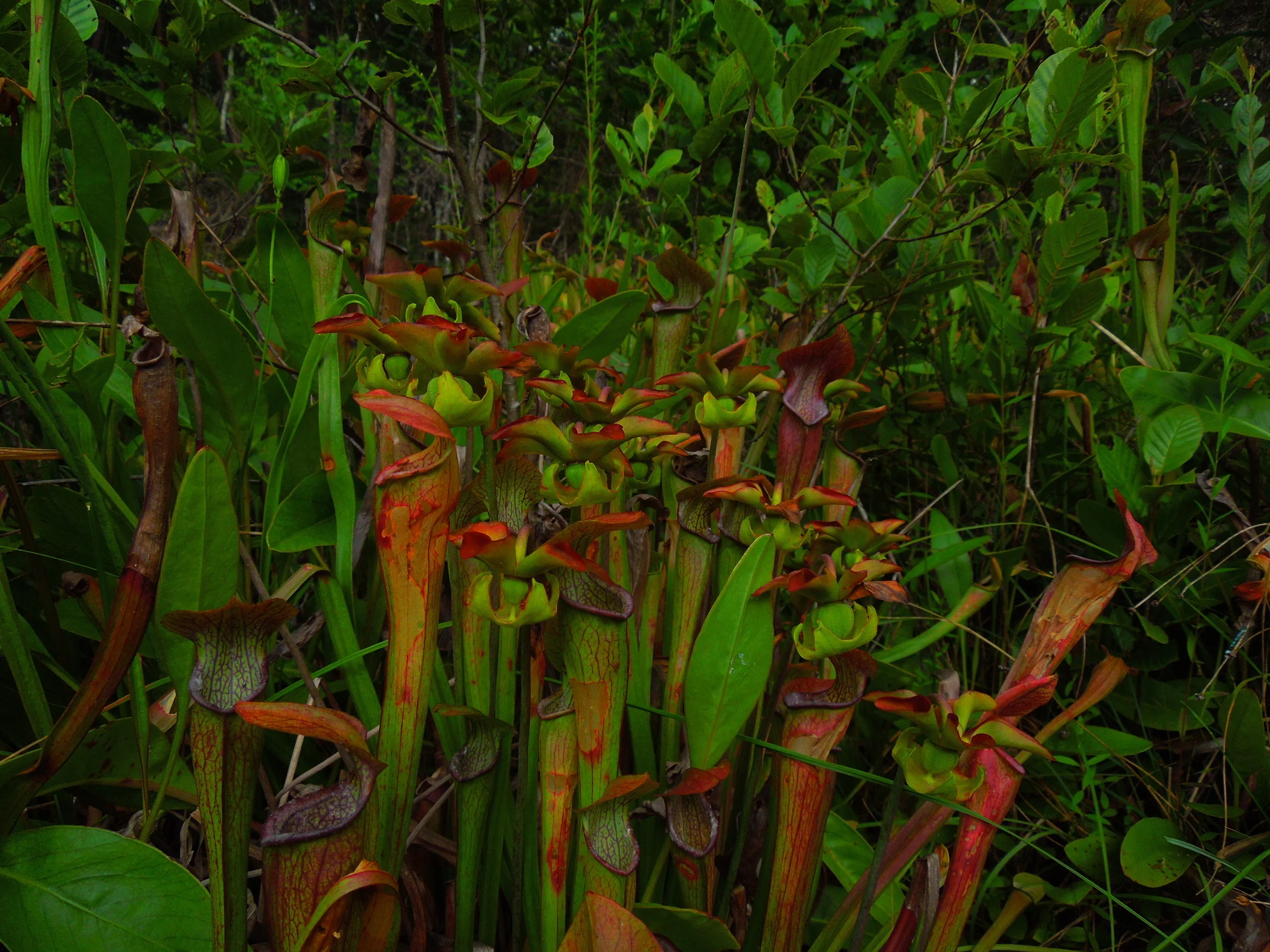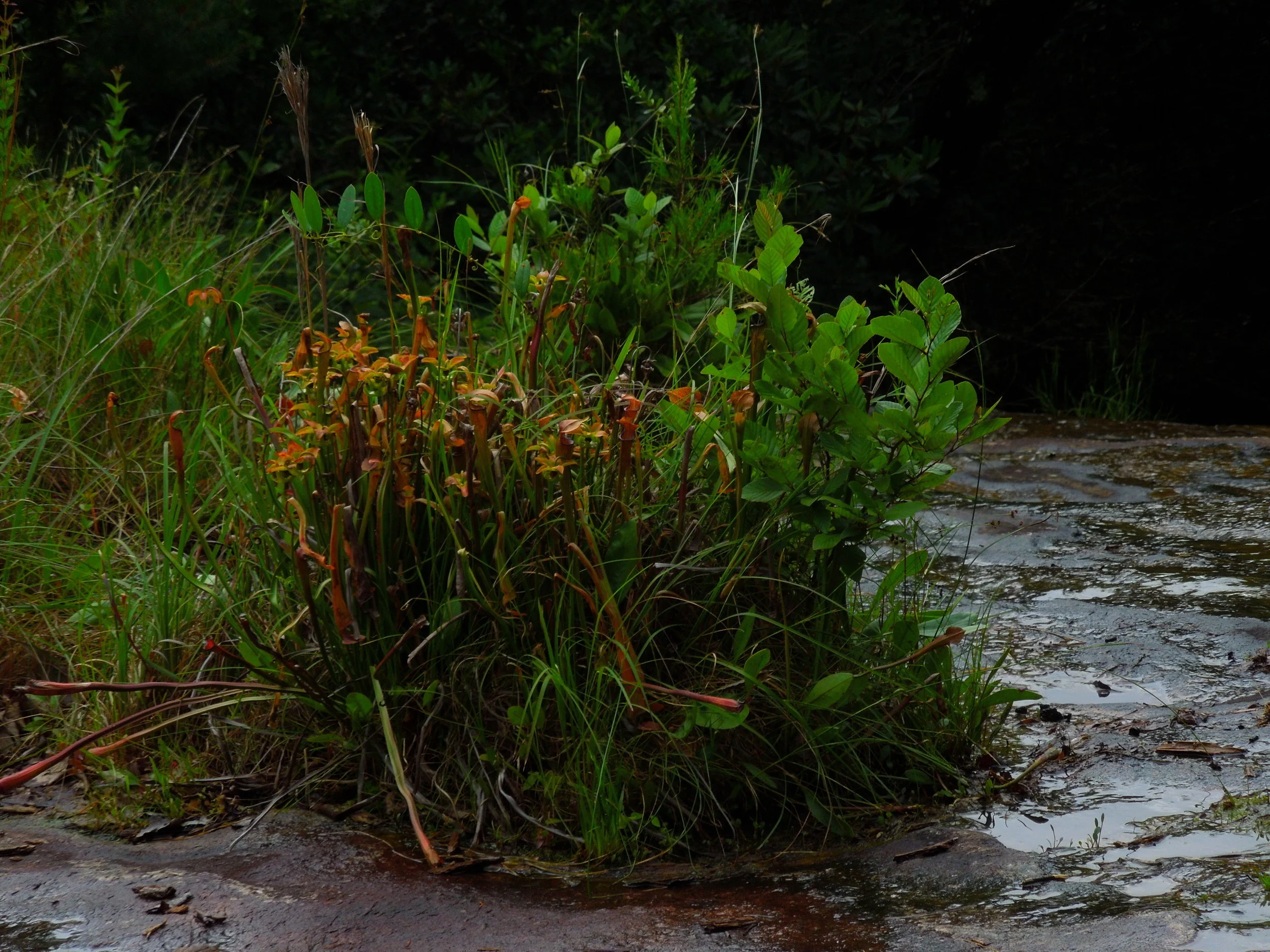I am fascinated by pitcher plants. The myriad shapes, sizes, and colors make them quite a spectacle. Add to that their carnivorous habit and what is not to love? I am used to having to visit bogs or coastlines to see them in person so you can imagine my surprise to learn that a small handful of pitcher plants haunt the mountains of Southern Appalachia.
Sarracenia jonesii is a recent acquaintance of mine. I never knew this species existed until 2016. It is a slender pitcher plant whose traps grow taller and narrower than the purple pitcher plant (S. purpurea) but not nearly as tall and robust as species like S. leucophylla. Regardless of its size, this one interesting carnivore. One unique aspect of its ecology is the habitats in which it grows. What could be more strange than a pitcher plant clinging to sloping granite slabs?
Most mountainous areas don't hold water for very long. Aside from bowls and the occasional lake, gravity makes short work of standing water. In southern Appalachia, this often results in impressive cascades where sheets of water flow over granite outcrops and balds. Where water moves slow enough to not wash soil and moss away, cataract bogs can form. Soils are so thin in these areas that trees and shrubs can't take root, thus keeping competition to a minimum. Because granite is rather inert, nutrients are scarce. All of these factors combine to make prime carnivorous plant habitat.
A cataract bog clinging to the side of a waterfall.
Along the edges of these cataract bogs, anywhere sphagnum and other mosses grow is where S. jonesii finds a home. One would think that growing in such hard-to-reach places would protect this interesting and unique carnivore. Sadly, that is not the case. To start with, S. jonesii was never common to begin with. Native to a small region of North and South Carolina, it is now only found in about 10 locations.
Habitat destruction both direct and indirect (alterations in hydrology) has taken its toll on its numbers in the wild. To add insult to injury, poaching has become a serious issue. In fact, an all green population of this species was completely wiped out by greedy collectors looking to add something rare to their collection. The good news is that there are dedicated folks working on conserving and reintroducing this plant into the wild. In 2007, conservationists at Meadowview Biological Research Station, with help from the National Fish and Wildlife Foundation Grant, successfully reintroduced a population of S. jonesii to its former range.
Although the future remains uncertain for this species, it nonetheless has captured hearts and minds alike. Hopefully the charismatic nature of this species is enough to save it from extinction. I only wish such dedicated conservation efforts were directed at more imperiled plant species, both charismatic and not.
Further Reading: [1] [2] [3]




